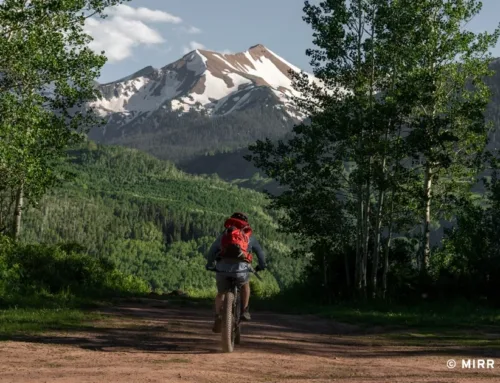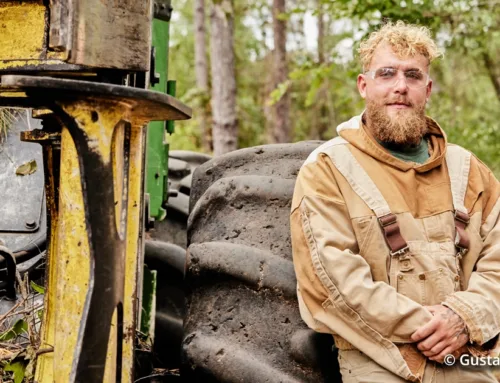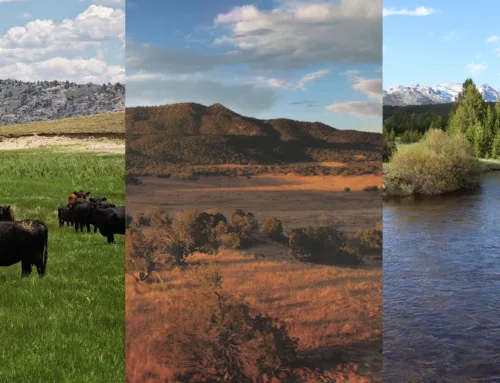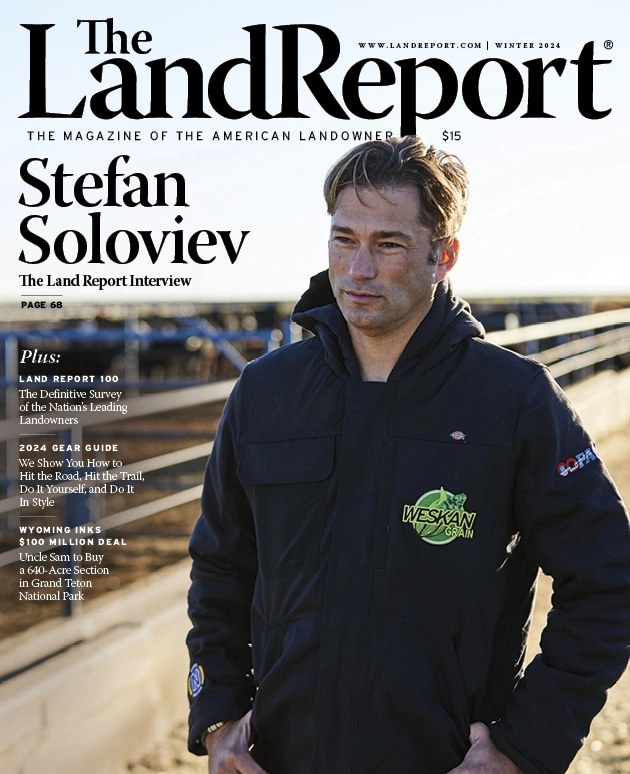American Serengeti
American Serengeti
By Todd Wilkinson
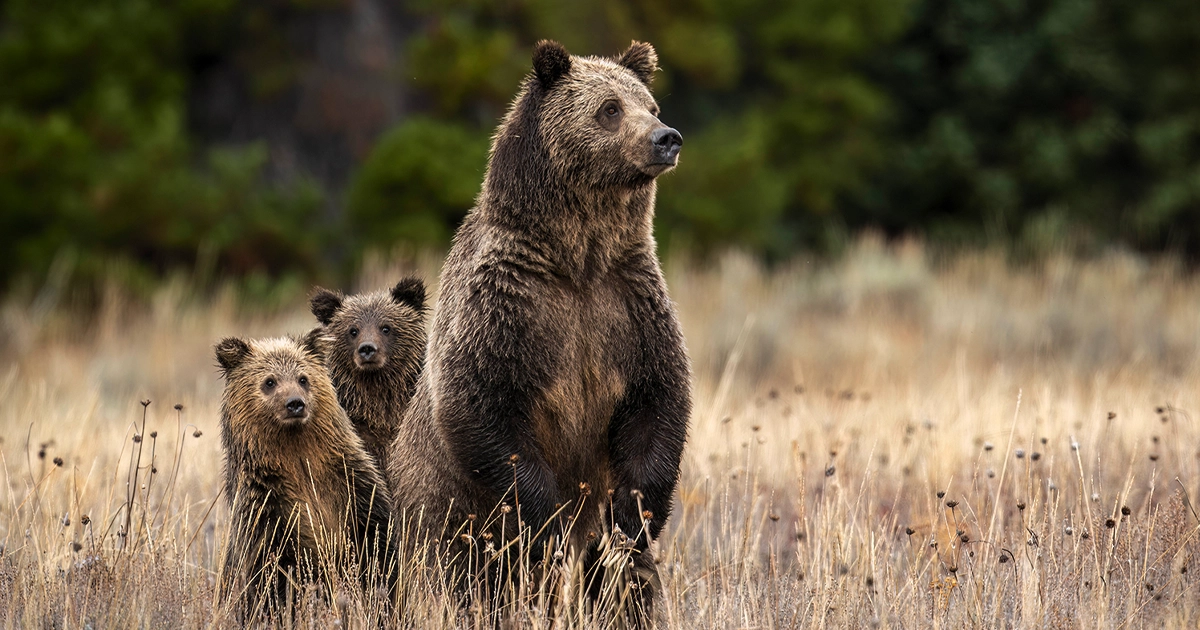
LR_AmericanSerengeti-01
CAMEO APPEARANCE. Charlie Lansche photographed Grizzly 793 with two cubs as the Fall 2023 issue went to press. It was the first sighting of Blondie in more than a year.
On a stormy summer evening in the Northern Rockies west of Yellowstone National Park, Rebecca Patton and Tom Goodrich are leaning over topo maps, ground-truthing a region that prominent global scientists have described as “the American Serengeti.” Joining the couple is an unconventional real estate dealmaker named Robert Keith who, together with a small band of colleagues accompanying him, runs the Bozeman, Montana-based investment firm Beartooth Group.
At first glance, this rendezvous appears to be a study group, one whose focus is the cartography of the Wild West. But it is actually a victory celebration. Patton and Goodrich — along with The Nature Conservancy of Idaho — are being toasted for securing vital pieces in a vast and complicated jigsaw puzzle that has been patiently pieced together.
Greater Yellowstone Ecosystem
And what an epic puzzle it is. The panorama surrounding Patton and Goodrich is a crucial crossroads, literally and figuratively. This corner of the Greater Yellowstone Ecosystem lies in the shadow of the Continental Divide where Idaho, Montana, and Wyoming intersect. Shimmering to the west is Henrys Lake in Idaho, where any number of small trout streams tumble out of the high country and empty into the tarn, then exit as the beloved Henrys Fork of the Snake River.
Towering in the distance are the Centennial and Gravelly Mountains in Southwest Montana. To the north stands the majestic Madison Range that vaults above the Madison Valley and the famous namesake river it cradles. A short drive away are Yellowstone and Grand Teton National Parks in Northwest Wyoming. To the south, a mosaic of national forest, meadows, and wetlands.
Of the 24 million acres comprising Greater Yellowstone, roughly 18 million take the form of national parks, forests, wildlife refuges, and other public lands, while the rest (about 6 million acres) is privately held. What happens on private property dramatically affects the fate of public lands. Wildlife recognize no human-drawn boundaries. A bold illustration of that is the very ground on which Patton, Goodrich, Keith, and his colleagues are now standing.
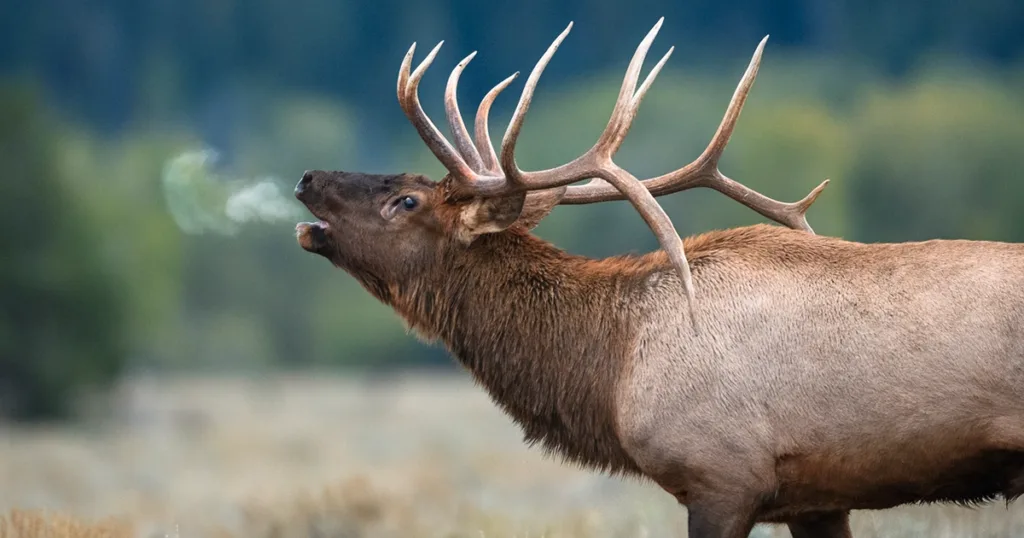
ROYAL BULL. A 6×6 bull elk bugles on a chilly morning.
Slash E Ranch
Called the Slash E Ranch, its protection was identified by The Nature Conservancy as the number one conservation priority in the state of Idaho. In addition, the Bureau of Land Management classifies the environs around Henrys Lake as an “area of critical environmental concern.” This status is due to the exceptionally high wildlife values present, according to Tess O’Sullivan, a conservation manager for The Nature Conservancy in Idaho.
At certain times of the year, the Slash E offers passage for thousands of moose, elk, pronghorn antelope, mule deer, and bighorn sheep moseying along a linear labyrinth 70 miles long. It offers sanctuary to a celebrated population of trumpeter swans and iconic species whose presence declares an even higher caliber of wildness — grizzly bears, wolves, mountain lions, and wolverines. Plus, its creeks and streams provide critical cooler water for native trout struggling in recent summers amid extreme temperatures and low flows.
The three-state nexus supports something exceedingly rare: a landscape that still nurtures a full variety of long-distance wildlife migrations.
American Serengeti
In fact, no other portion of the Lower 48 still has all of the original wild megafauna that were present when Europeans arrived on the North American continent in 1492. Hence, the allusion to the Serengeti Plain in East Africa, famous for its biodiversity and mass movement of species involving millions of wildebeest, zebra, predators, and prey.
Yet, for as rugged and capacious as the terrain in Greater Yellowstone Ecosystem may appear to the untrained eye, the threads — or one might say the interlocking puzzle pieces — holding it together are remarkably fragile.
David Hallac, formerly the chief scientist at Yellowstone National Park, says that when discussing environmental threats to natural landscapes, a “death by a thousand cuts” analogy is invoked to describe obvious threats. In the case of the Greater Yellowstone, Hallac says the region is suffering from a steady laceration by 10,000 scratches. Although often subtle, they add up over time.
At a recent international conference on wildlife migrations at Jackson Lake Lodge in nearby Grand Teton National Park, Matthew Kauffman, who oversees a research project called the Wyoming Migration Initiative, offered this perspective: “Nothing poses a bigger threat to the functional persistence of these amazing wildlife corridors than human residential development, which fragments landscapes and prevents species from being able to move through them,” he said.
“This kind of development is so destructive to ecological integrity because its footprint is permanent. When was the last time you ever saw a subdivision go away?” he asks.
Kauffman said there’s presently a race happening in the Greater Yellowstone region and many corners of the Rocky Mountain West between the amount of private land being permanently protected by conservation-minded buyers on the one hand and former ranches and family farms being carved up by development on the other.
Two people who have quietly entered the race, trying to keep Greater Yellowstone’s spectacular mosaic of biodiversity intact, are Patton and Goodrich. The couple’s enthusiasm for paying forward a legacy of natural wonder for future generations is infectious and on full display.
“Rebecca and Tom are heroes,” Keith says, noting that they represent “a new kind of investor,” one who relies on market forces to achieve wildlife conservation at the landscape level. It is conservation, he notes, that will last far beyond all of our lifetimes.
“The returns being realized are so much greater than the purely financial,” Keith adds. “Rebecca, Tom, and others like them are helping to protect the integrity of a true national treasure. It is literally this country’s best-known wildlife-rich region and one that acts as a model for the world. The impact of this work extends far beyond the simple protection of wildlife and their habitat; it is actively mitigating climate change, helping to safeguard ecosystem services like clean water and healthy soils, and keeping wild, open spaces wild and open for generations to enjoy.”
These are measures of return that yield an ecological form of compound interest, Keith notes, “that go way beyond the almighty dollar. Through their investments, they are preserving priceless things that only accrue greater intrinsic value as the world gets more crowded and that will be cherished by future generations.”
Keith says Patton and Goodrich are the epitome of benefactors who will be remembered as having been “great ancestors.” Working in partnership with groups like the Idaho and Montana chapters of The Nature Conservancy, they have played a leading role in working with Beartooth to acquire strategically important lands. Their injection of capital and sagacity in valuing returns far beyond the financial has made a tremendous amount of land conservation happen. It’s conservation that all citizens benefit from, Keith notes.
During the height of the COVID pandemic, and even before, people seeking to acquire their own pieces of solitude away from urban areas flocked to Greater Yellowstone in record numbers. That included readers of The Land Report who bought ranches and farms — some of which, through conservation easements, have been turned into protected recreation properties and retreats that benefit wildlife and humans alike. But it also included an onslaught of sprawl that inundated rural areas.
Spanning almost two square miles, the 1,072-acre Slash E Ranch where Patton, Goodrich, Keith, and his colleagues have assembled was already platted to become a suburbanlike subdivision with more than 70 residential homesites, commercial businesses, and an RV park. Such development would have joined a creeping pattern of sprawl that has already spread along Idaho State Highway 20 to Island Park, where some wildlife corridors are being squeezed by human pressure.
Scientists say that this scattershot approach to development in pristine areas is akin to blood clots that create blockages in the human body and can cause heart attacks or strokes. In the Greater Yellowstone, the ancient pathways that migrating animals rely on to move between mountains and valleys on a seasonal basis are the lifeblood of this natural circulatory system. Just like wildlife in Kenya and Tanzania, they crisscross a quilt of public and private lands — only far more discreetly.
In 2012, Dr. Charles Schwartz, head of the renowned Yellowstone Interagency Grizzly Bear Study Team, was lead author of a peer-viewed scientific analysis that examined the impacts of rural development on wildlife, including species that wander in and out of Yellowstone National Park as animals do across the Slash E Ranch.
“The negative environmental consequences of rural land development, including landscape fragmentation, have been widespread and extensive in the USA,” the authors wrote. “Over 90 percent of the land in the Lower 48 states has been logged, plowed, mined, overgrazed, paved, or otherwise modified from pre-settlement conditions.” The Greater Yellowstone Ecosystem was spared because its geographic remoteness prevented it from succumbing to those landscape-taming effects.
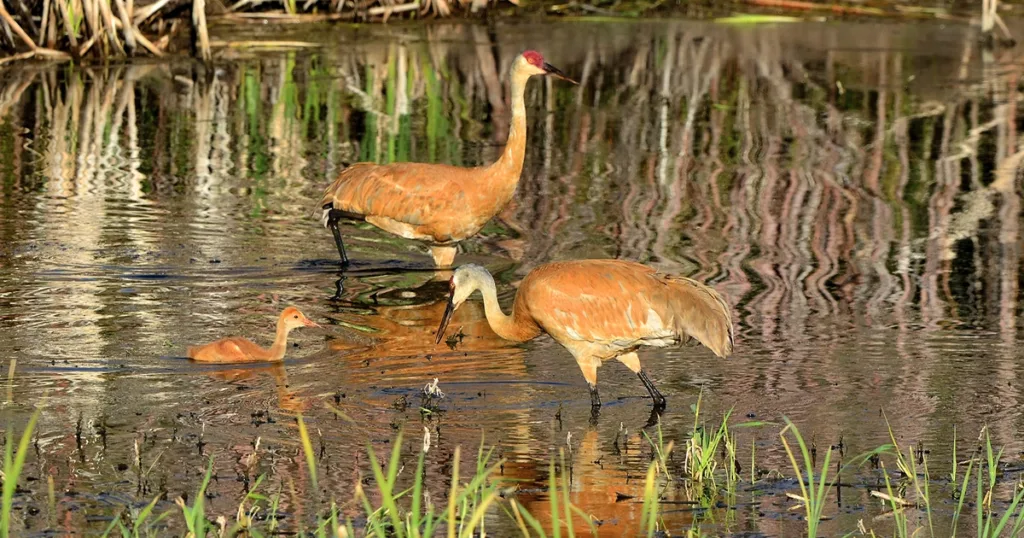
SANDHILL CRANES. A nesting pair feeds with its colt in wetlands at Idaho’s Harriman State Park.
Just One House
A key finding of the analysis was that in terms of development densities, a single house and related infrastructure on 640 acres —a one square mile section of land — is enough to cause a grizzly bear to avoid an entire area. That single house brings with it a footprint of human development that is markedly larger than the square footage of the structures.
Extrapolate that sprawl across a landscape like the Slash E Ranch, sitting at a pinch point for wildlife migration on the doorstep of Yellowstone National Park, and what emerges is a major and irreversible problem, Keith says. Moreover, as other scientists have noted, grizzlies are both an umbrella and indicator species. This means that secure habitat conducive to their existence benefits hundreds of other species.
Similarly, negative impacts to bears can be harbingers for other animals sensitive to human intrusion. In recent years, mother bears with cubs have been documented ambling along the banks of Howard and Targhee Creeks, foraging on trout, ground squirrels, biscuit-root, wild berries and other natural foods on and around the Slash E Ranch.
Nontraditional Returns
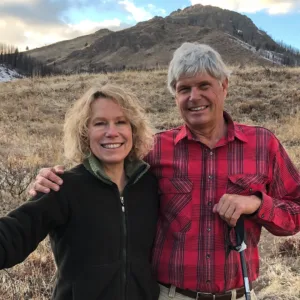
GREAT ANCESTORS. Rebecca Patton and Tom Goodrich seek investment returns that will “last far beyond all of our lifetimes.”
The millions of travelers who visit Yellowstone to watch grizzlies or bison ramble may not realize how remarkable this flat peneplain of terra firma is or how the health of this parcel is linked to the persistence of species inside America’s first national park.
But its significance is top of mind for both Patton and Goodrich, who say their love of the natural world has transformed the way they approach investing. So often, financial returns, even when presented on a profit and loss statement, are abstract or temporary, Goodrich says. This kind of investing does not involve extraction or traditional monetization of individual assets. Rather, he notes, the rewards are tactile, sensual, and enduring.
To gaze at a grizzly mother with cubs or hear wolves howl in the moonlight or listen to bull elk bugling primordially during the autumn rut — these are experiences that are gone for good in most of the world.
“This region still has its magic,” says Mark Menlove, state director of The Nature Conservancy in Idaho.
Beartooth Group
For decades, the Beartooth Group has filled a singular niche in conservation real estate. (See The Land Report Summer 2021.) The company bills itself as “a boutique private-investment and advisory firm.”
While traditional brokerages target pristine properties, Beartooth’s niche is identifying ranches that have suffered from neglect or overuse, securing them at a fair price, investing in their renaissance, working with habitat experts to restore their ecological health, and then reselling them, often with conservation easements attached. Beartooth’s buyers then acquire these incredible retreats for fishing, hunting, and wildlife.
For their part, Beartooth’s investors earn a traditional financial return as well as a host of environmental returns in the form of wildlife habitat restored, habitat protected, climate change mitigated, the creation of climate change refugia, and the additional bonus of being able to enjoy the properties. That approach, based on methodical selection of properties consistent with conservation partners’ targets, has set the firm apart. However, during COVID, it became increasingly difficult to find appropriately priced investments. The combination of more sensitive lands coming on the market as farmers and ranchers retire and an intensification of demand from buyers nationally and internationally led to a spike in prices that was well beyond the means of conservation organizations. The result has been an inordinate amount of creative dealmaking, Keith says.
Great Ancestors
Private and introspective, Patton and Goodrich are not publicity seekers. Content to do good behind the scenes, they are willing to have their names mentioned in this story because they hope others will discover the joys of using their financial assets, no matter how large or small, to safeguard our country’s natural heritage. The way they describe it, the path they took to get to this point has been part of an ongoing evolution that spans decades.
Believing in the power of markets, they began their respective professional journeys knowing how to make money by leveraging assets and ideas. Both studied at the Stanford Graduate School of Business, where they met and became a couple. Patton found success in the blossoming, high-tech world of Silicon Valley in the 1970s. Goodrich’s passion remains in finance, mostly in private equity and venture capital. They’ve done well.
After earning her MBA, Patton spent 20 years in upper management in Silicon Valley with name-brand companies including Apple and E*TRADE. Then she signed on as the CEO of a dot-com.
“It was after that experience that I became determined to change course,” Patton says. She felt a yearning to work on behalf of unspoiled landscapes, wildlife, and the people who inhabit them.
In 2001, Patton was hired to serve as a regional director for The Nature Conservancy, an international leader in private-land conservation. Over the next eight years, she ultimately became chief conservation strategies officer and managing director of the Pacific North American and Pacific Western regions for the organization. Since then, she has spent the last decade and a half actively engaged with conservation organizations, most recently serving as board chair of the Idaho Conservation League.
At the same time, Goodrich worked for the San Francisco-based private investment office of the Bechtel family. In 1991, he formed a new investment firm, Duff, Ackerman & Goodrich. Initially, the firm focused on private equity. Then it shifted into venture capital. Although he still participates at Duff, Ackerman & Goodrich, he has increasingly focused on how to achieve greater impact through conservation projects and philanthropy. This is what he and his wife feel most passionate about.
The more time the couple spent away from the San Francisco–Silicon Valley corridor, the more they found their perspective changing. The Northern Rockies and the Greater Yellowstone Ecosystem have that effect on people. Public land settings like Yosemite National Park and the Sierra Nevada Mountains are visually stunning, but human pressures have seriously decimated the ability of wild species to survive in those places.
This is especially poignant given that the grizzly bear is featured on California’s state flag. What they came to appreciate, Patton notes, is that landscapes suitable to hold grizzlies — and there aren’t many left — possess a magical sense of wildness.
“California is a beautiful state with a great deal of important biodiversity, but we have an opportunity to protect complete ecosystems with healthy predator populations in Idaho, Montana, and Wyoming. If we can protect critical wildlife corridors that are threatened by development and invest in nonlethal wildlife-conflict techniques — both require money and will — we can retain what is incredibly special and rare about the Rocky Mountain West.”
Pioneers Alliance
As they look back, Patton and Goodrich say that the first opportunity that encouraged them to begin thinking about a different investing metric occurred in 2007 when they purchased the Little Wood Ranch in Idaho. The introduction to the seller came courtesy of The Nature Conservancy as part of an initiative known as the Pioneers Alliance.
As it turned out, the Pioneers Alliance landscape became one of the great “saves” in the West. Roughly 100,000 agricultural acres were brought under a conservation easement in a 300,000-acre sweep of ecologically critical private and public land in Central Idaho.
“Purchasing land that was part of the Pioneers Alliance landscape wasn’t pure philanthropy, but it was a large investment for us at the time in a very illiquid asset,” Goodrich says.
“The philanthropy came in our donation of a conservation easement to protect the land in perpetuity,” she says.
Their relationship with the Beartooth Group was subsequent, and it grew from being a fund investor to purchasing property in its portfolio to then partnering on acquiring — rescuing, actually — two critical Yellowstone tracts in a bridge-financing role. “We were willing to expand our work together because of our deep regard for Beartooth and its work and trust in the skills and integrity of the principles,” Goodrich says.
In the Pioneer Mountains of Central Idaho, they witnessed results firsthand. “Investing in our piece of that landscape feels good in the context of the whole. Working with The Nature Conservancy and public agencies, we have worked on grazing practices, stream restoration [with beaver dam analogs], wildlife fencing, and removing invasive plant species,” Patton says.
“Watching a new wetland emerge last summer after beaver activity created a new path for the creek running through the property was an awesome experience,” she says. Their participation enabled both of them to experience profound epiphanies that deepened their reverence for life on Earth.
Sharps Fire
“We were devastated when the Sharps Fire came through and burned the property five years ago. But then it’s incredible to watch how nature recovers when you give it a chance. Most satisfying is watching the full range of wildlife use the property, from moose to bears to pronghorn to beavers to sandhill cranes and many other species of birds. Our riparian areas have been featured in scientific articles to show how these high-biodiversity systems can resist fire impacts,” Patton says.
In the Rocky Mountain West, there’s been a greater sense of urgency emerging with a dramatic influx of people — and a growing fear that nature is being loved to death. The stakes have become much higher in the Greater Yellowstone.
TNC’s Menlove says a narrow window of opportunity exists to identify and protect the last best remaining wildlife habitat. When the Slash E Ranch came on the market at the height of the COVID pandemic, developers with only profit aspirations and no sense of what could be lost began circling. There was no time to waste.
Over the years, TNC’s Idaho chapter has established a solid reputation by keeping working ranching operations viable and protecting key properties. One standout is its flagship Flat Ranch Preserve near Island Park, Idaho. Other notable examples are the conservation easements TNC brokered in Montana for Ted Turner’s 113,000-acre Flying D Ranch southwest of Bozeman, as well as those with large ranches in the nearby Centennial Valley near Red Rock Lakes National Wildlife Refuge. It was at Red Rock Lakes that North America’s largest native waterfowl, the trumpeter swan, was saved from near extinction.
Given its location and importance, TNC was interested in purchasing the unprotected portions of the Slash E. Numerous obstacles existed, including a hefty price tag. In addition, the sellers wanted a quick sale, and there were clouds on the property’s title. TNC reached out to Beartooth Group, Beartooth enlisted Patton and Goodrich, and the team devised a strategy to protect TNC’s highest priority in Idaho.
Working together, Beartooth, Patton, and Goodrich moved quickly to acquire the Slash E. Several months later, when TNC had raised the funding needed, the unprotected, densely platted portions of the ranch were sold to TNC. Throughout this period, sustainable livestock grazing continued, and affordable housing was made available to local fishing guides.
O’Sullivan said the speed at which Beartooth was able to mobilize resources, thanks to Patton and Goodrich, was extraordinary. Part of the reason was because Patton and Goodrich have worked with Beartooth for decades. Shortly before the Slash E transaction, the partners worked with TNC Montana, again in what is effectively a bridge-financing role, to secure nearly 500 acres of a nearby private parcel.
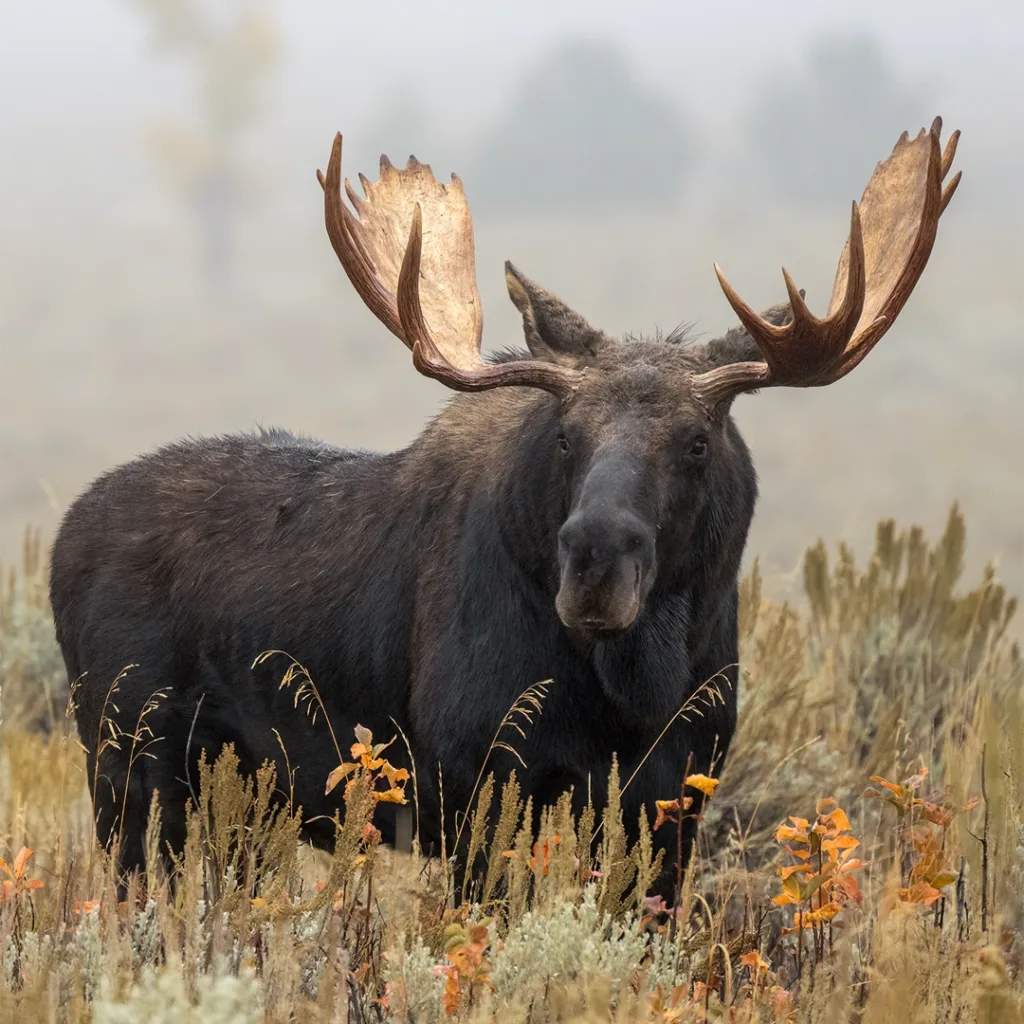
OUT OF THE MIST. A mature bull moose stands his ground in Grand Teton National Park.
Those 500 acres consisted of inholdings on the west fork of the Madison River drainage. They were located smack dab in the middle of critical wildlife habitat and surrounded by the Beaverhead-Deerlodge National Forest. It could have easily become a destination resort or a blighting cluster of tract homes. Instead, the parcels are being purchased by the Forest Service.
According to Keith, it was a win-win-win-win. “First, the former owners were able to exit a challenging ownership situation. Second, vital pieces of habitat were prevented from being developed. (The first of the three acquired parcels has already been transferred to the Forest Service.) Third, a nearby agricultural operator, committed to coexistence with wildlife, secured additional grazing lands. Fourth is that you have two very happy investors in Rebecca and Tom.”
“There are a set of relationships that we’ve had for a long time, and as our capacity has grown, we’ve been presented with opportunities that have more and more impact by leveraging talent, connections, and resources,” Goodrich says.
“It’s very gratifying. We have great trust in the organizations and people we’ve come to partner with — their expertise, their strategies, and their integrity. Trust is so critical, whatever the size of the invested capital,” he says.
Indeed, it’s not often that investors can cite that through their investment portfolio they helped sustain a region such as the American Serengeti in a manner similar to how Theodore Roosevelt and John Muir are praised for expanding our national parks, says Ben Alexander, a conservation-transaction specialist with Beartooth.
“At Beartooth Group, we work closely with scientists and conservation partners to identify the most ecologically important properties in our region and ensure that our investor’s capital has a high-impact natural return,” Alexander explains. “We love working with investors like Rebecca and Tom who are willing to move quickly to prevent devastating development impacts and who also embrace the long view on creating value in our natural world.”
Patton and Goodrich have never approached their initial investments as one-offs. They’re in it for the long haul. For years, they have continued to roll their investment forward, using proceeds from one successful project to help finance the next.
At what point did Patton and Goodrich realize the urgent need for bridge financing and holding property until conservation buyers could be found or arrangements made to transfer deeds into public ownership?
“This has been a more recent awakening with the dramatic influx of people into the West and the frightening extent of habitat fragmentation,” Patton says. “We are seeing this in the Idaho panhandle, where we were determined to help protect private land along a grizzly-management area. In just five years, private-land prices have skyrocketed with minimal development restrictions, and so many people are coming in to get their 10 acres of ‘paradise.’ More important and frightening is the unbridled development around Yellowstone National Park.”
What advice does she have for visionary people reading this story who might be interested in exploring conservation investment opportunities? “It’s hard for an individual to know how to have strategic impact unless you have relationships with conservation organizations working in this space and others like Beartooth who are close to the ground and have a strategic perspective on priorities,” Goodrich says.
Across the country, conservation investment is a growing value-added sector. From pioneers in the space like Ted Turner to large landowners affiliated with the Western Landowners Alliance, which hold sway over tens of millions of acres, it’s not only considered cool to be involved with wildlife protection but it’s a way of achieving deeper meaning.
Thought Leaders
Sharpening their thinking, Patton and Goodrich point to thought leaders who have trumpeted the importance of “investing in nature,” such as Greg Carr. Raised in the Greater Yellowstone town of Idaho Falls, Carr has led efforts to bring back to life Gorongosa National Park in Mozambique. On two occasions, Carr has been featured on the CBS newsmagazine 60 Minutes.
Patton and Goodrich also cite Doug and Kris Tompkins in showing how business ideals can be applied to conservation. Each forged a distinguished career path. Doug founded outdoor apparel company The North Face and then went on to found the Esprit clothing company. After selling Esprit for a tidy profit, Doug turned his attention to the Patagonia region of Chile and Argentina, where he had gone mountaineering.
Simultaneously, his future wife, Kris, was exiting as CEO of Patagonia. Together, the couple acquired private land in valleys throughout the Andes Mountains and created national parks to protect native species and habitat. Kris was featured in the award-winning documentary Wild Life, produced by Elizabeth Chai Vasarhelyi and her husband, Jimmy Chin, the mountaineer who filmed and starred in the spine-tingler Meru.
“They are in a league of their own,” Patton says of the couple. “We deeply admire what they have done, and it has made us think what we can do within our own capacity. The big thing for us is dedicating more of our wealth when it is so urgently needed and also dedicating more of our time. We’re in danger of losing so many places. I would suggest to others to focus on the places you know and love and where you’ve experienced ‘the wild.’ That’s what the Tompkinses did on a grand scale. They showed what’s possible. While we are by no means comparing our work to theirs, we have found that one opportunity leads to another, and they build in a gratifying way.”
I asked the couple what they would say to people in Greater Yellowstone who may be taking biodiversity and the quality of wildlands for granted. “Sometimes I think we have the sense that its protection is covered because of public-lands protections in place and NGOs working on issues,” Goodrich says.
But that is a dangerous assumption, he believes. Take the precarious situation with the Slash E Ranch. While it was ultimately saved, it easily could have been transformed into an empty hole in the jigsaw puzzle comprising the country’s most iconic wildlife ecosystem.
“What I think many people don’t realize is that during the time when parks, wilderness areas, and national forests were being created, we did not have a full understanding of ecosystems. Now we know that the private lands that are connected to public lands are critically important in this context. But they were not incorporated into early conservation planning,” Patton says.
“And, of course, the richest private lands were settled early and still are highly sought after given elevation and access to water. It has recently become more of a crisis because the big parcels of private lands — ranches — are getting subdivided given the high prices and economic challenges of ranching. The budgets of conservation groups are deeply challenged to keep pace.”
Goodrich says it can be hard for individuals to know how to have strategic impact. “Unless you have relationships with the conservation NGOs and other groups such as Beartooth, who are close to the ground and have a strong strategic perspective on priorities, these kinds of incredible opportunities might not be on your radar screen,” Goodrich says. “We encourage people who care and are willing to help through philanthropy or in other ways like bridge financing to ask the NGOs whose work they know and respect where the biggest area of need is.”

FULL CURL. A Rocky Mountain bighorn sheep in Yellowstone National Park.
Conservation Investing
“When people give large gifts to education, the arts, or medicine, they are thinking about legacy, but conservation investing is a way of achieving a true ‘living legacy,’ ” Goodrich says.
“Perhaps because of the history of major philanthropy, there is a bias toward investing in areas outside of the natural world, but I think that is changing, especially with the threat of climate change. You have to get close to the issues to see how deep the threat is, and I think many people take what we have for granted,” she says.
Conservation investing bestows upon individuals the ability to participate in time travel. So believes Robert Keith. In this moment, we are living in the future — a future created by visionaries who came before us and whom we regard with utmost veneration for delivering benefits to us that lasted long beyond their days. This is what is driving Rebecca Patton and Tom Goodrich. They are destined to be remembered as ancestors who helped pay forward something of rare and ineffable value — the natural heritage of America. Once it’s gone, often it can never be brought back.
As I was leaving the Slash E Ranch and admiring how it contributes to the Greater Yellowstone Ecosystem, storm clouds broke and the sky opened to reveal a double rainbow. There was alpenglow on the mountains. This was no piece of a puzzle but the twilight ambiance of a masterful work of art by Albert Bierstadt or Thomas Moran. Even to this day, the area is a picture of wildness much as they encountered it, much as it was intuitively recognized by indigenous people who knew for millennia the connections between abundance of wildlife, sustenance, and spiritual survival.
“The work we are doing now is the most meaningful work of our lives,” Patton says. “We derive such great satisfaction from what we are able to do, but we also are deeply worried that the urgency of action is not as broadly felt as it should be. One positive that can come out of the move of people from urban to rural is an opportunity for more people to experience a semblance of the wild and become more committed to contributing in various ways to its persistence. Local experience and caring are powerful. It’s a combination that enhances the way you see and understand the world.”

TRUMPETER SWAN. Nearly all Rocky Mountain trumpeter swans winter in ice-free waters in the Greater Yellowstone Ecosystem.
Originally published in The Land Report Fall 2023.


